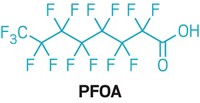Advertisement
Grab your lab coat. Let's get started
Welcome!
Welcome!
Create an account below to get 6 C&EN articles per month, receive newsletters and more - all free.
It seems this is your first time logging in online. Please enter the following information to continue.
As an ACS member you automatically get access to this site. All we need is few more details to create your reading experience.
Not you? Sign in with a different account.
Not you? Sign in with a different account.
ERROR 1
ERROR 1
ERROR 2
ERROR 2
ERROR 2
ERROR 2
ERROR 2
Password and Confirm password must match.
If you have an ACS member number, please enter it here so we can link this account to your membership. (optional)
ERROR 2
ACS values your privacy. By submitting your information, you are gaining access to C&EN and subscribing to our weekly newsletter. We use the information you provide to make your reading experience better, and we will never sell your data to third party members.
Environment
Policy Roundup
December 19, 2016
| A version of this story appeared in
Volume 94, Issue 49
China has unveileda three-year plan to prevent accidents involving hazardous chemicals. Municipal and local governments will identify and audit all sites where hazardous chemicals are made or stored, and a new state council will compile a database of the hazardous chemicals in the country. Producers of ammonium nitrate and certain other chemicals will come under special scrutiny.
Wearable devices, such as bracelets, that could measure alcohol levels are the subject of a new competition from the National Institute on Alcohol Abuse & Alcoholism. The devices must detect alcohol in blood or interstitial fluids rather than sweat. The winner would receive $200,000.
Immigrants in the U.S. who are college-educated—including a half-million with science training—often work in low-skilled jobs or are underemployed, a report from three nonprofits says. If these 1.9 million people were employed at their education level they could make $40 billion more a year and pay $10 billion in taxes.
Vapor intrusion of volatile chemicals that migrate from contaminated soil to the buildings above will now factor into criteria used by EPA to add potential hazardous waste sites to the superfund National Priorities List. The list contains more than 1,300 sites slated for further investigation and possible remediation.





Join the conversation
Contact the reporter
Submit a Letter to the Editor for publication
Engage with us on Twitter